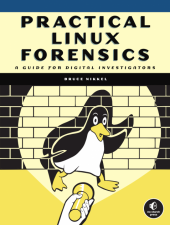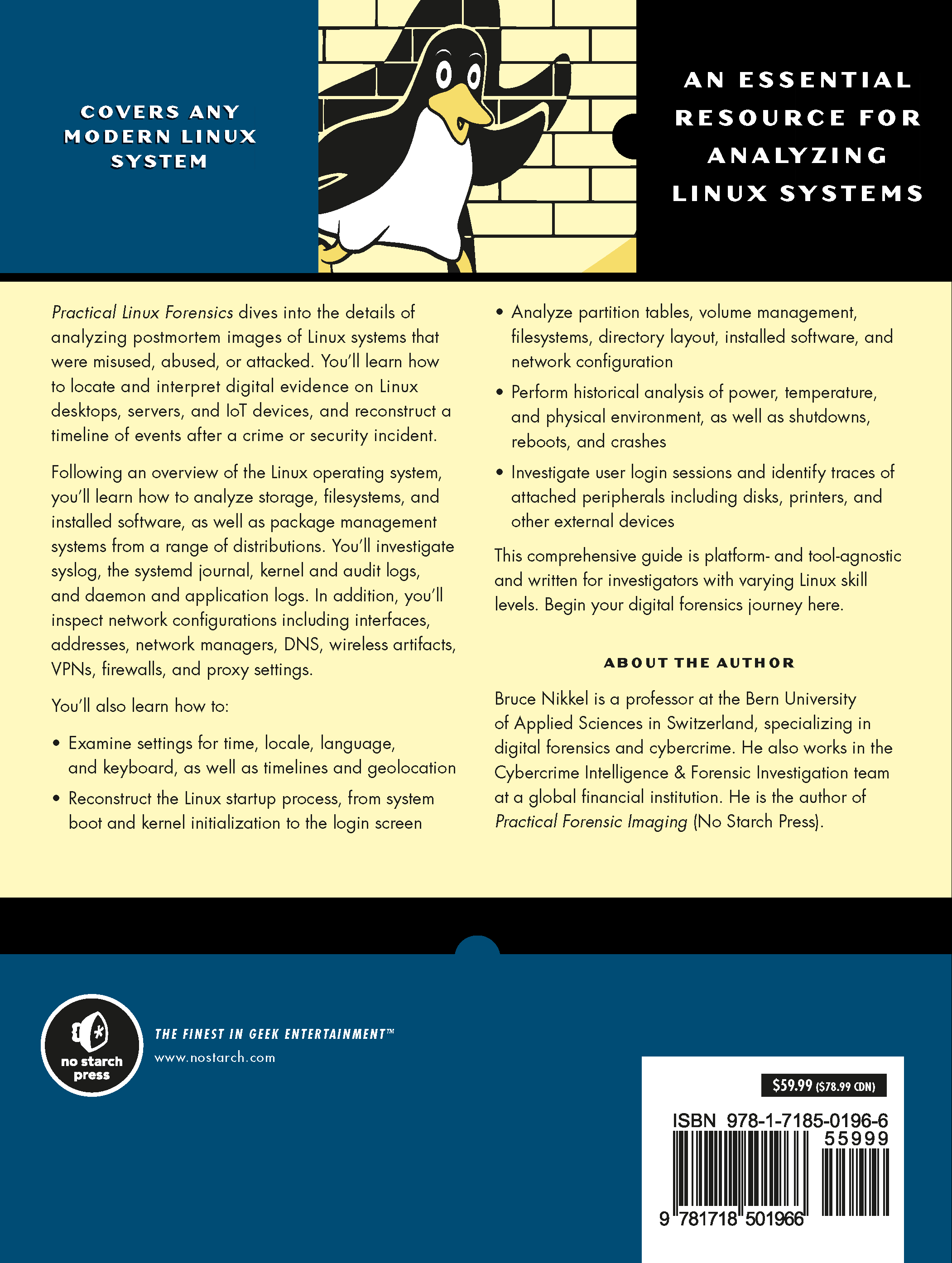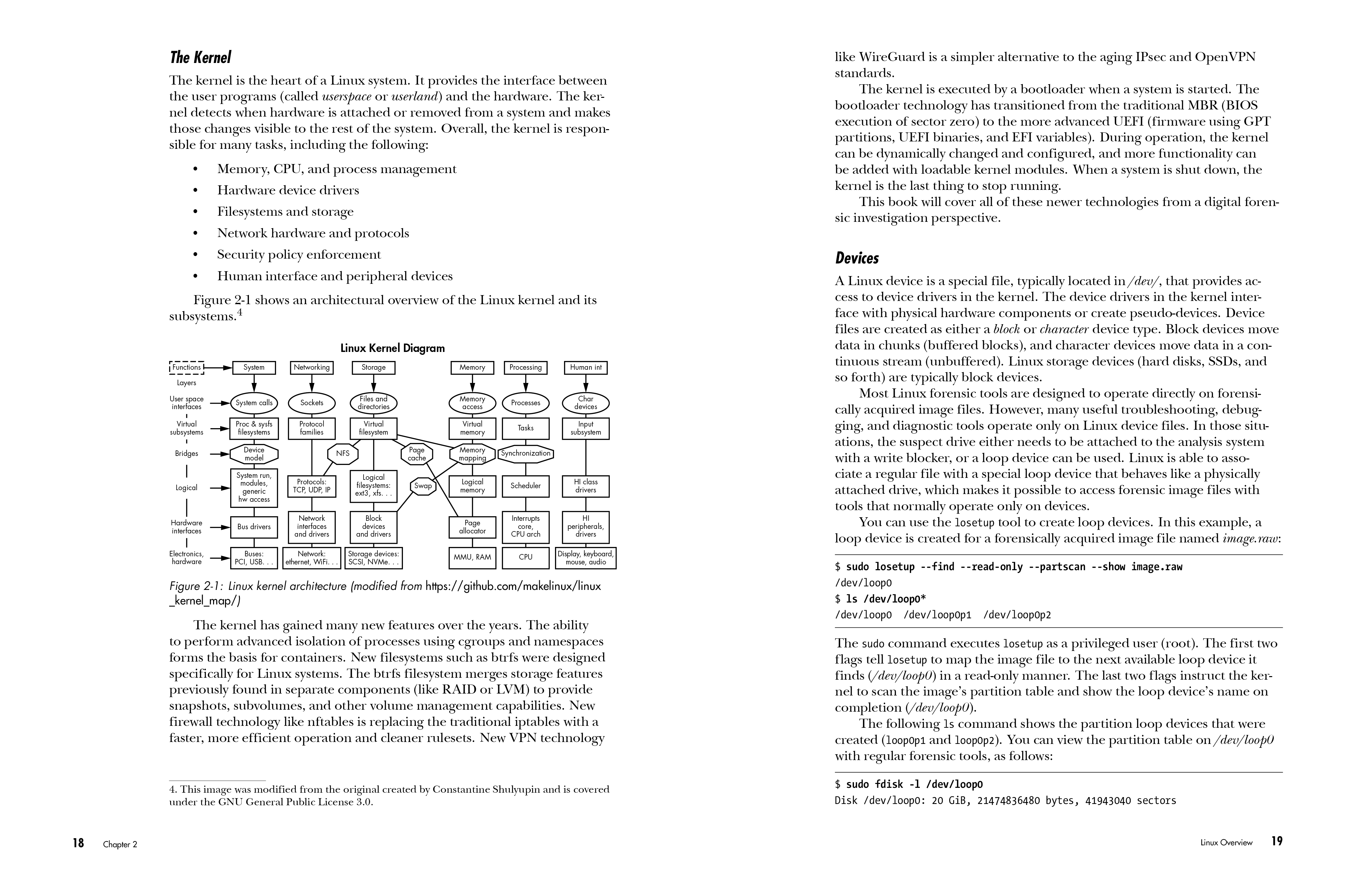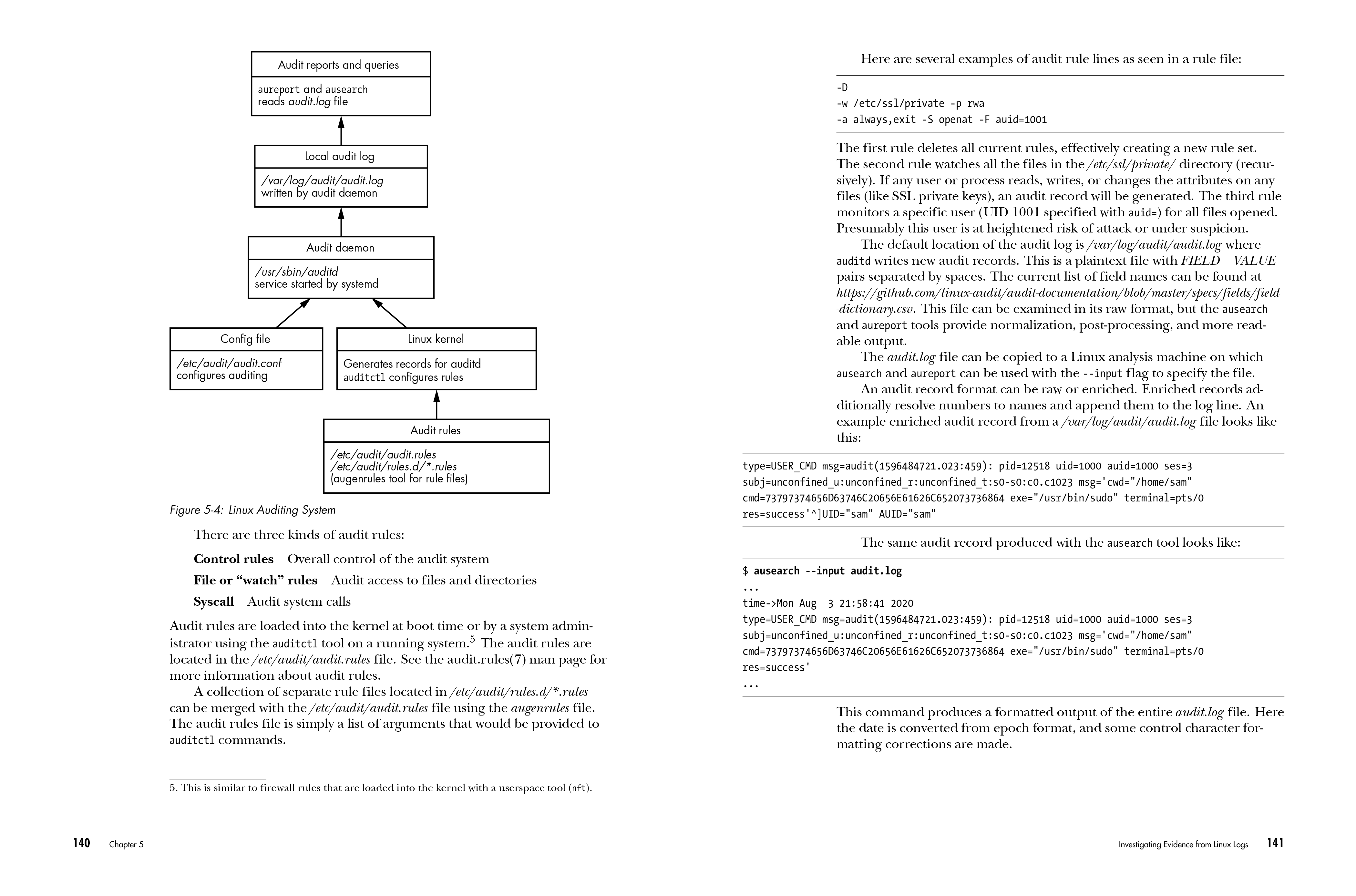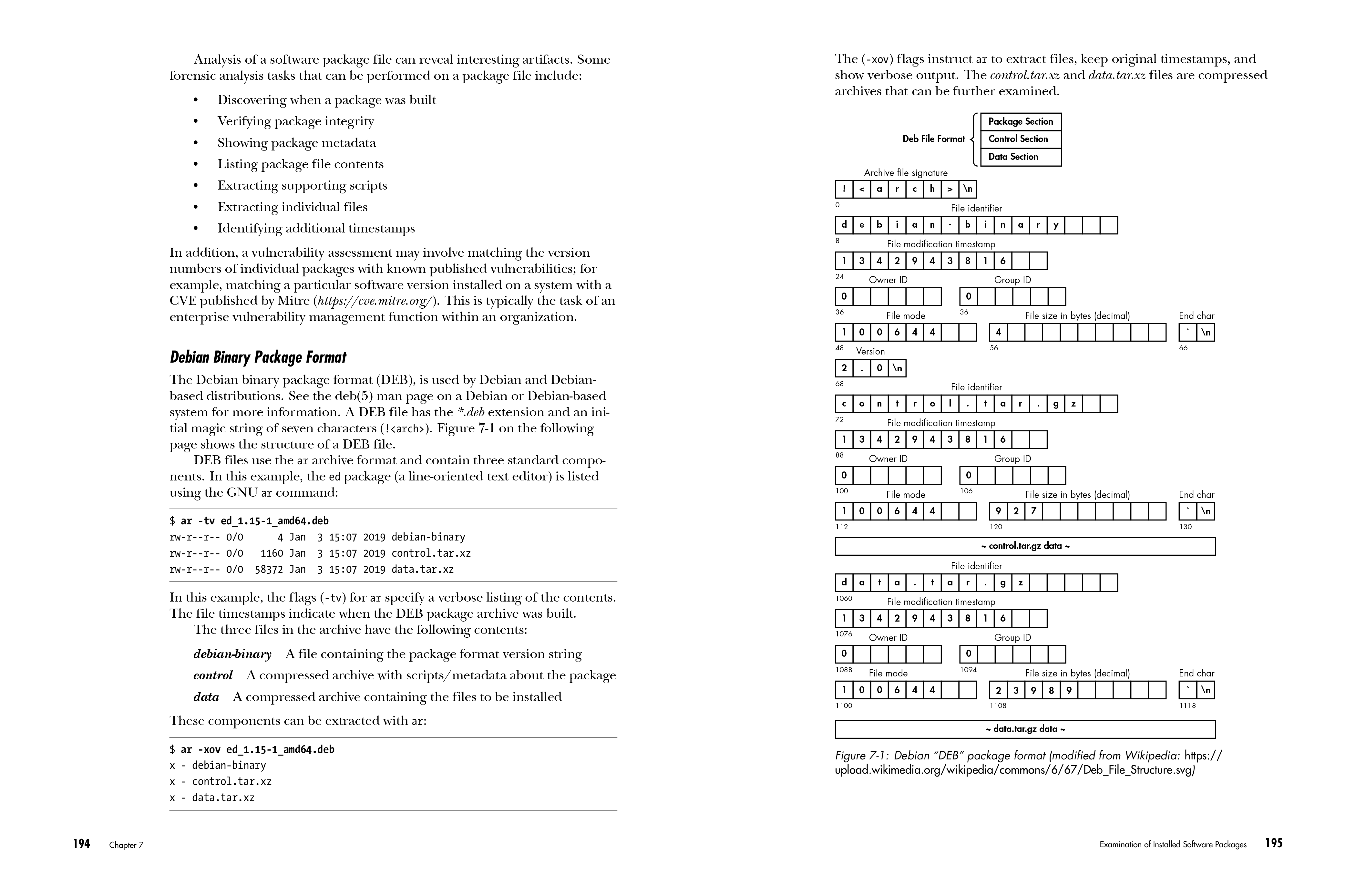“Practical Linux Forensics is an excellent resource suitable for those new to Linux, as well as for experienced users. Whether you are an investigator, administrator, developer, or curious student, you will gain imperative knowledge that can easily be applied to your own field and endeavors.”
—Techtyte, Cybersecurity Researcher and Advanced Reviewer
"Thorough . . . Even if this is your first foray into computer forensics, there is a lot to be gained from Nikkel’s book."
—Lee Teschler, Microcontroller Tips
"A comprehensive and informative guide . . . The author provides a wealth of information and practical tips that can be used in real-world scenarios, making it a valuable resource for both professionals and students. It is a must-read for anyone looking to gain a deeper understanding of forensic analysis on Linux systems."
—The Security Noob
"After Practical Forensic Imaging, Bruce Nikkel has produced another fantastic learning resource and reference in Practical Linux Forensics. Made both for professionals more familiar with Windows or macOS forensics as well as adept Linux users looking to learn forensics, it does not need to be read linearly. Each chapter provides focused knowledge on different aspects of Linux systems in a distribution-agnostic manner. Definitely grab a copy to demystify this area of computer forensics."
—Daniyal S., Advanced Reviewer
"Bruce Nikkel shares some [insight on] really uncommon and least understood areas of the Linux network stack, which will be very valuable for practitioners . . . [Practical Linux Forensics] touches on areas ignored by other resources on the subject."
—Arvind, Advanced Reviewer

